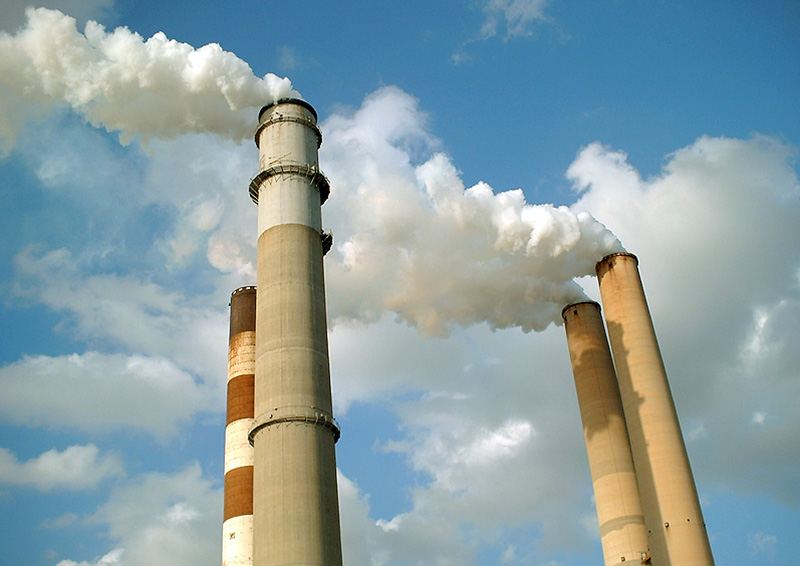Carbon emissions in the built environment
The term ‘carbon emissions’ refers to the release into the atmosphere of carbon dioxide (CO2).
Carbon dioxide is a naturally-occurring colourless and odourless gas that is integral to life. It is also a greenhouse gas and the burning of carbon-based fossil fuels means there is more carbon carbon dioxide in the atmosphere leading to increased rates of climate change.
Carbon-based fuels that release carbon dioxide when burned include timber, coal, gas, oil, petrol, diesel and so on.
The amount of carbon released by a particular event, person, building or thing is typically referred to as its ‘carbon footprint’, and is measured in tonnes of CO2. On a individual level, the main contributors to a carbon footprint include the amount of type of energy that is used to heat the home, the use of electrical appliances, type of transport, amount of air travel, and so on.
The Building Regulations set out requirements for specific aspects of building design and construction. Regulation 26 of the building regulations states that 'where a building is erected, it shall not exceed the target CO2 emission rate for the building…'.
The target CO2 emission rate (TER) sets a minimum allowable standard for the energy performance of a building and is defined by the annual CO2 emissions of a notional building of same type, size and shape to the proposed building. TER is expressed in annual kg of CO2 per sq. m.
Energy performance certificates (EPCs), set out the energy efficiency rating of buildings. They are required when buildings are built, sold or rented, if they have a roof and walls and use energy to condition an indoor climate.
The establishment of the Climate Change Act 2008 committed the UK to reducing greenhouse gases by at least 80% by 2050 (compared to the 1990 baseline), with a reduction of at least 34% by 2020. A strategy for how this was to be achieved was set out in The Carbon Plan published in December 2011.
The commitment to reducing carbon emissions is a considerable, and often controversial, factor in the development of major infrastructure projects such as the third runway at Heathrow Airport, with activists arguing that its construction will tie the UK into an increased rate of emissions for many years.
In December 2006, the then Labour government committed that from 2016 all new homes would be ‘zero carbon’ and introduced the Code for Sustainable Homes, against which the sustainability of new homes could be rated. However, on 10 July 2015, the government published ‘Fixing the foundations: creating a more prosperous nation’ which made the surprising decision to scrap the zero carbon homes initiative.
[edit] Related articles on Designing Buildings
- Carbon capture and storage.
- Carbon capture processes.
- Carbon dioxide.
- Carbon dioxide equivalent.
- Carbon emissions reduction target CERT.
- Carbon factor.
- Carbon footprint.
- Carbon negative.
- Carbon neutral.
- Carbon Plan.
- Carbon ratings for buildings.
- Consumption emissions.
- Emission factor.
- Fugitive emissions.
- Greenhouse gases.
- Net zero carbon building.
- Operational emissions.
- Process carbon dioxide emissions.
- Reducing UK emissions: 2018 Progress Report to Parliament.
- Residual emissions.
- Target emission rate.
- The Carbon Project: improving carbon emission data.
- Upfront emissions.
- Zero net regulated carbon emissions.
Featured articles and news
Construction Skills Mission Board launch sector drive
Newly formed government and industry collaboration set strategy for recruiting an additional 100,000 construction workers a year.
New Architects Code comes into effect in September 2025
ARB Architects Code of Conduct and Practice available with ongoing consultation regarding guidance.
Welsh Skills Body (Medr) launches ambitious plan
The new skills body brings together funding and regulation of tertiary education and research for the devolved nation.
Paul Gandy FCIOB announced as next CIOB President
Former Tilbury Douglas CEO takes helm.
UK Infrastructure: A 10 Year Strategy. In brief with reactions
With the National Infrastructure and Service Transformation Authority (NISTA).
Ebenezer Howard: inventor of the garden city. Book review.
The Grenfell Tower fire, eight years on
A time to pause and reflect as Dubai tower block fire reported just before anniversary.
Airtightness Topic Guide BSRIA TG 27/2025
Explaining the basics of airtightness, what it is, why it's important, when it's required and how it's carried out.
Construction contract awards hit lowest point of 2025
Plummeting for second consecutive month, intensifying concerns for housing and infrastructure goals.
Understanding Mental Health in the Built Environment 2025
Examining the state of mental health in construction, shedding light on levels of stress, anxiety and depression.
The benefits of engaging with insulation manufacturers
When considering ground floor constructions.
Lighting Industry endorses Blueprint for Electrification
The Lighting Industry Association fully supports the ECA Blueprint as a timely, urgent call to action.
BSRIA Sentinel Clerk of Works Training Case Study
Strengthening expertise to enhance service delivery with integrated cutting-edge industry knowledge.
Impact report from the Supply Chain Sustainability School
Free sustainability skills, training and support delivered to thousands of UK companies to help cut carbon.
The Building Safety Forum at the Installershow 2025
With speakers confirmed for 24 June as part of Building Safety Week.
The UK’s largest air pollution campaign.
Future Homes Standard, now includes solar, but what else?
Will the new standard, due to in the Autumn, go far enough in terms of performance ?
BSRIA Briefing: Cleaner Air, Better tomorrow
A look back at issues relating to inside and outside air quality, discussed during the BSRIA briefing in 2023.
Restoring Abbotsford's hothouse
Bringing the writer Walter Scott's garden to life.
Reflections on the spending review with CIAT.


























